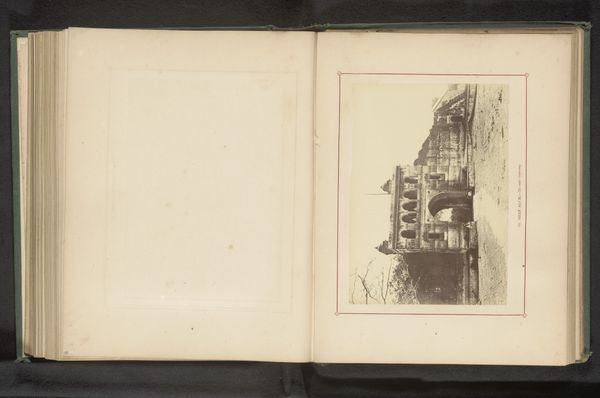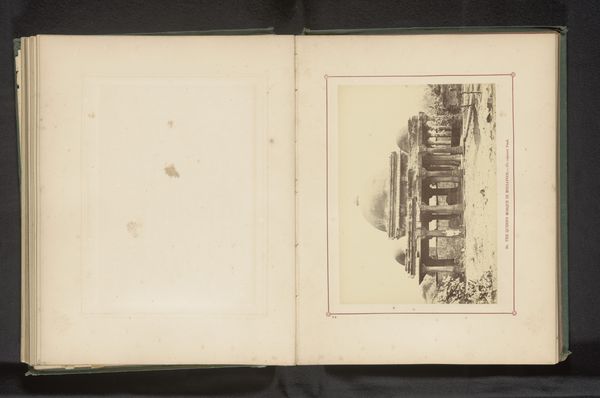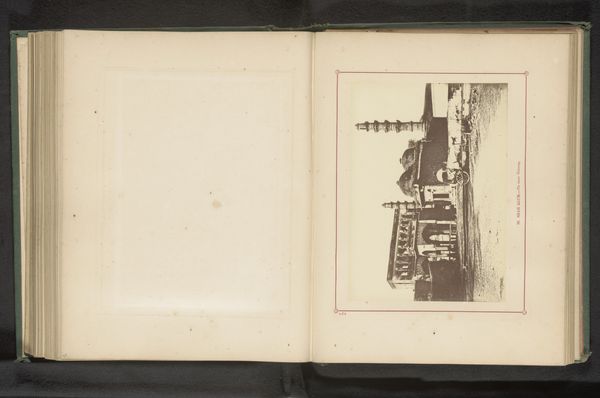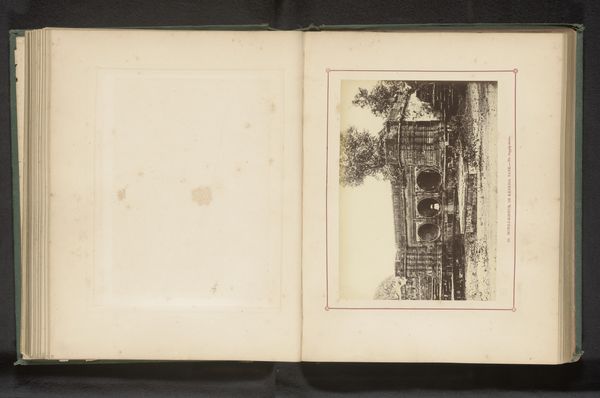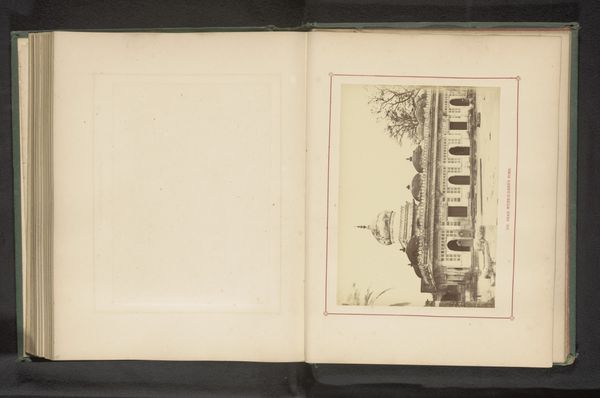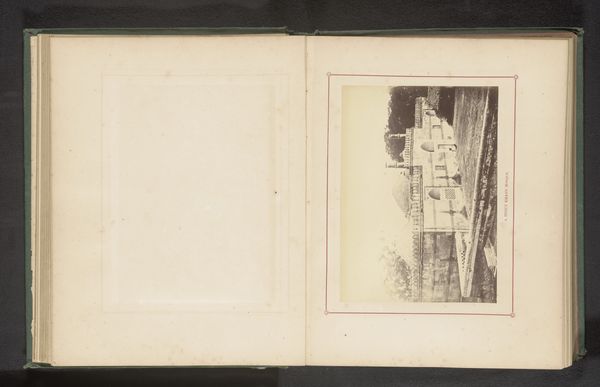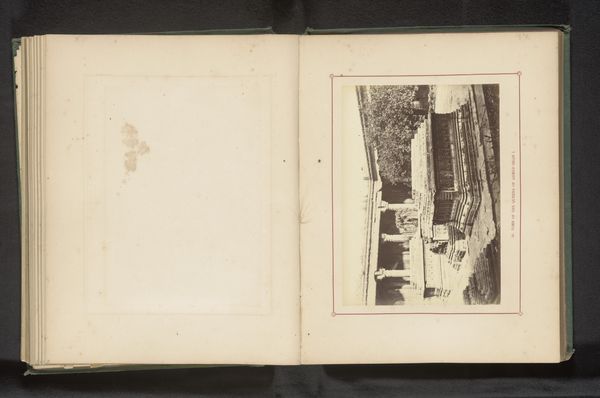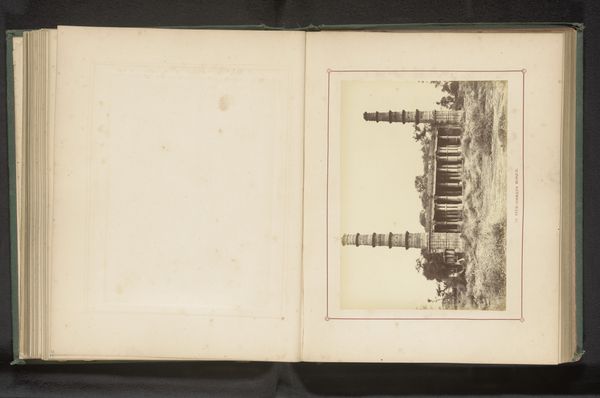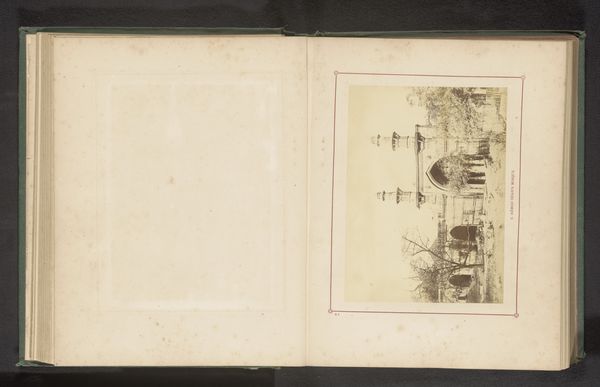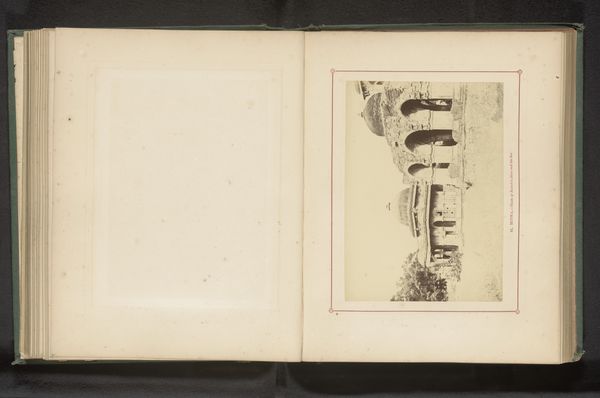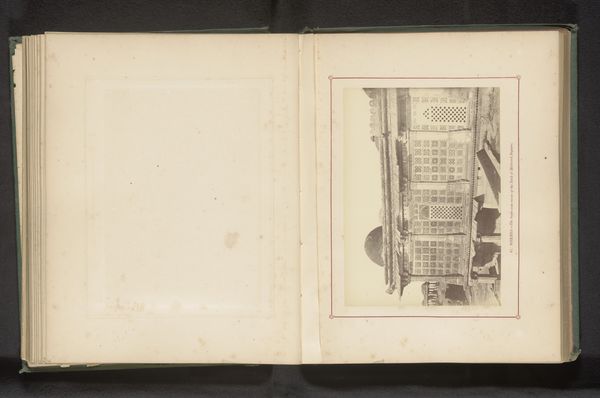
print, photography, gelatin-silver-print
# print
#
landscape
#
photography
#
gelatin-silver-print
#
cityscape
#
islamic-art
#
watercolor
Dimensions: height 136 mm, width 181 mm
Copyright: Rijks Museum: Open Domain
Curator: This gelatin silver print, attributed to Thomas Biggs before 1866, captures a “View of the Baba Lului Mosque in Ahmedabad.” The composition, presented within this bound volume, immediately conveys a sense of both architectural grandeur and a solemn timelessness. What's your initial reading of the piece? Editor: There's a palpable texture, an almost granular quality, particularly in the building itself. The dome is soft, rounded, offering a clear counterpoint to the linear geometry of the rest of the structure. It’s as though Biggs were deliberately playing with form to evoke a sense of grounded monumentality. Curator: Absolutely. Considering the colonial context in which this image was created, it can be viewed as more than just an architectural study. Biggs, working for the British government, produced photographic documentation intended to catalog Indian monuments, subtly reinforcing British claims of historical and cultural knowledge. The choice of perspective, and the stark realism of the medium, arguably lend the colonizers authority over this cultural narrative. Editor: I agree, that cannot be overlooked. But simultaneously, from a formal perspective, observe the contrasts between light and shadow—they sculpt the mosque into an almost abstract study of geometric forms. Note the repetition of the archways, drawing the eye deeper into the structure. Biggs’ engagement with pattern is masterful. Curator: And those patterns are steeped in the rich history of Islamic art and design. These are not simply aesthetic choices. The emphasis on geometric ornamentation, so prominent in this architectural style, mirrors the tenets of Islam that champion complex mathematical order. This work then becomes a representation of complex religious ideology. Editor: Very insightful. Still, what intrigues me are the blank spaces, the undefined patches surrounding the edifice; what kind of meaning could be created by those abstract areas that complement the structural image, that would invite the viewer into some level of contemplative openness. Curator: It's true— the open fields offer room for consideration; one wonders of the role the surrounding neighborhoods might have played within Ahmedabad during this period of significant geopolitical power shifts, or about those who passed by it every day. We must keep this narrative, not only alive, but growing and responsive. Editor: Precisely, and looking at these varying aspects gives a deeper vision.
Comments
No comments
Be the first to comment and join the conversation on the ultimate creative platform.
